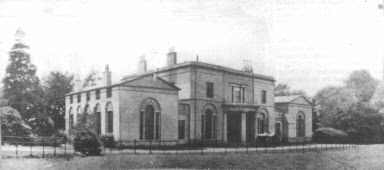Gentle readers, frequent contributor Tony Grant wrote this post for Raquel Sallaberry's blog, Jane Austen em Português. Raquel has generously agreed to let me publish this post, which Tony sent in English.
This year is the two hundredth anniversary of the publication of Sense and Sensibility. Jane Austen started writing this novel of youth and naivity when she was nineteen years of age. It is an exploration of a teenagers emotional pain and mistakes made.
I first became aware of Jane Austen at an early age. I was born and brought up in Southampton on the south coast of England. Southampton was the town Jane lived in with her mother, her best friend Martha Lloyd and her brother frank’s wife , Mary. They moved into a house in Castle Square during the year of 1806. It had a high position behind the ancient medieval walls of the town overlooking a great bay where centuries before Henry V and his troops had set sail from for France and victory at Agincourt. They had a magnificent view of the New Forest in the distance.
When I was a little boy my grandmother pointed out the pub called the Juniper Berry and now called the Bosuns Locker which is on the sight of the house where Jane lived with her family. I also went to school in Bitterne and attended St Mary’s College which is situated on a hill overlooking a valley with the Portsmouth Road running through it. On the other side of the valley used to be the estate of a family called the Lances.
Jane Austen became friends with the Lances while living in Southampton, attended balls at the Dolphin Hotel in the high street with the Lance daughters and visited their house for tea and admired Mrs Lance’s pianoforte. From my classroom I could look out on Lances Hill on the opposite side of the valley and was told on more than one occasion by my English teacher that Jane Austen had been there. So from a very early age I was aware of Jane Austen.
I didn’t read any of her novels until in 1975 I was doing a degree in English literature. One of my units was a course on the 19th century novel and we had to read Mansfield Park. I loved getting to grips with the structure of Mansfield Park and the meanings in the novel. As the years went by I visited Winchester many times. I got to know Chawton well, paying homage to Jane, and adding, over the years, layer after layer of knowledge and developing responses to our Jane.
It wasn’t until about five years ago I set about reading all of Jane’s novels including Sanditon, getting to grips with her letters and reading Claire Tomlin’s excellent biography of Jane.
Sense and Sensibility is of special importance to me because I think, one of the things Jane enables us to do in all her novels is hold a mirror up to ourselves. Her novels help us reflect on ourselves. Sense and Sensibility does this especially for me through the character of Willoughby. He reminds me of my dissolute youth, perhaps drinking too much , looking out for a good time always, and seeing attractive women merely as a good lay. I too was superficial. I empathise with his pain as maturity and knowledge of his true love dawns on him. Willoughby was unlucky because he made too many fatal mistakes and lost Marianne. I was far luckier. I met my wife, Marilyn, and she changed me. It felt, just right, deep down when I met her. We made a connection. It is still right 29 years and four children later. The superficiality of my early relationships, often as exciting as exploding fireworks, were no more than that, a bright sparkling explosion and then nothing.
Thank you Jane for writing Sense and Sensibility and thank you Willoughby for reminding me what could have happened. All men should read Sense and Sensibility for their own good.
This year is the two hundredth anniversary of the publication of Sense and Sensibility. Jane Austen started writing this novel of youth and naivity when she was nineteen years of age. It is an exploration of a teenagers emotional pain and mistakes made.
 |
| Castle Square today |
I first became aware of Jane Austen at an early age. I was born and brought up in Southampton on the south coast of England. Southampton was the town Jane lived in with her mother, her best friend Martha Lloyd and her brother frank’s wife , Mary. They moved into a house in Castle Square during the year of 1806. It had a high position behind the ancient medieval walls of the town overlooking a great bay where centuries before Henry V and his troops had set sail from for France and victory at Agincourt. They had a magnificent view of the New Forest in the distance.
 |
| 18th century white house is Tony's school |
 |
| Little Lance's Hill on part of the Lance's estate |
 |
| The Dolphin Hotel |
It wasn’t until about five years ago I set about reading all of Jane’s novels including Sanditon, getting to grips with her letters and reading Claire Tomlin’s excellent biography of Jane.
 |
| Chesil House, the home of the Lances |
 |
| Carried her down the hill. Brock image @Molland's |


